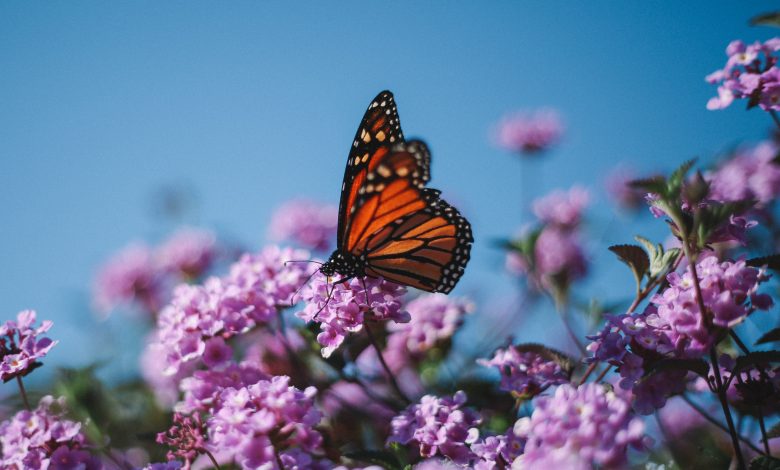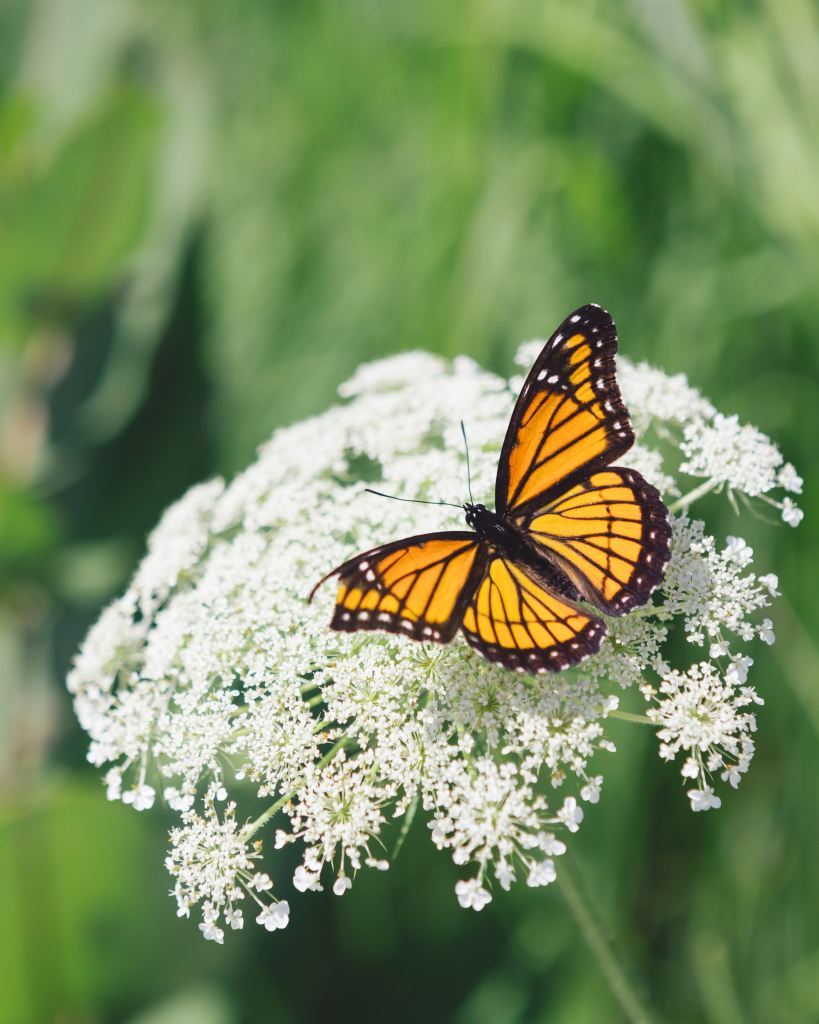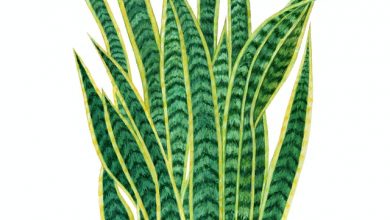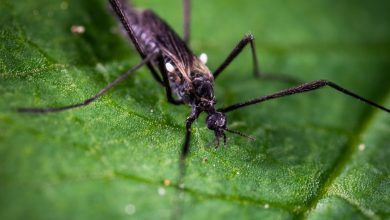How to Grow a Monarch Butterfly Garden

Butterflies are one of the most popular insects floating around our planet. They are found on almost every continent on the planet, treating us to their graceful flight and mesmerizing colors. Based on records, it’s estimated that there are as many as 15,000 different species of butterflies!
Sadly, it’s been recorded that one butterfly species in particular has been having a tough time in the last decade. The Monarch butterfly has seen serious drops in its population, and it’s causing alarm across the planet.
Fortunately, there are ways that we can help these delicate creatures! It all starts in your garden. Monarch butterflies require specific plants to obtain their nutrients, which you can plant right in your own backyard!
If you want to know how to grow a monarch butterfly garden, we have some tips and tricks that you can start implementing. Let’s grow beautiful gardens, and help the butterflies!
Pollinating Butterflies
Butterflies are a huge part of the pollination that takes place on the planet. The hard work of these insects allows us to enjoy some of our most delicious foods, including our fruits and vegetables! Butterflies work alongside other pollinators, such as the bees, to help us access the foods we need to survive.
The Monarch is one of those butterfly species that work so hard to help things grow. While their bodies are not built to collect as much pollen as bees can, Monarch butterflies still play an important role.
To attract and support the Monarchs in your garden, there are lots of plants to consider and unique spaces to implement! If you want to know how to build a butterfly garden, check out the tips below!

Best Flowers for Butterflies
Having bright and beautiful flowers in your garden is sure to bring a smile to your face, but there are some flowers that do so much more than just look good! Consider planting some of these key flower species to attract Monarchs to your space.
Milkweed
If you want to support every part of the Monarch butterfly’s life cycle, then you’ll definitely want to make room for Milkweed in your garden. Without this plant, the Monarch would not exist!
The Monarch butterfly lays its eggs on milkweed plants, and the resulting larvae feed on the milkweed plant. Most insects cannot eat the sap from milkweed, but Monarch caterpillars eat it for a specific purpose—the diet makes larvae and adult butterflies taste offensive to birds and other prey.
There are three types of milkweed that you should choose from, based on your garden and location: Showy Milkweed, Swamp Milkweed, and Tropical Milkweed.
Butterfly Bush
Not surprisingly, this type of flower is ideal for the Monarch butterfly. The structure of the flowers, which are tubular, help the butterfly to latch onto the plant and feed deep into the nectar supply.
The butterfly bush boasts an extensive blooming season, so Monarchs can rely on this flower as they prepare for migration season.
A butterfly bush in your garden would look amazing if you’re searching for a unique shape, and you can bet you’ll have a show of Monarchs to enjoy as well!
Zinnia
Planting zinnias in your garden is a surefire way to attract Monarch butterflies. They love to perch on flowers with large landing pads, and you’ll be able to enjoy this bright flower all summer long.
This flower comes in all kinds of colors, most of which are very attractive to Monarchs. Considering implementing reds, pinks, or oranges into your garden setting. If you’ve got a bare area to fill, a packet of Zinnia seeds will happily fill the void with their large heads.
The bonus: Planting Zinnias might also bring hummingbirds to your space!
Cosmos
Cosmos are another friend of the Monarch; luckily, if you plant this flower in your garden, you’re sure to support the bees as well! Cosmos are unique, in that their center is actually made up of lots of smaller, tubular flowers.
This is perfect for the structure of the butterfly and their eating style.
If you’re looking for a simple, non-finicky flower for the garden, Cosmos are a great addition. You can spread the seeds over the soil, and nature will take care of the rest. Monarchs love the high supply of nectar that Cosmos can hold, so they’ll appreciate whatever color you choose.
Goldenrod
Many gardeners avoid Goldenrod because it looks like something that would entice their unwanted allergies. While it does resemble the all-hated ragweed, Goldenrod is a beautiful plant that isn’t nearly as aggressive as ragweed.
Goldenrod actually has very large pieces of pollen, whereas ragweed has dusty pollen that easily releases and floats into the wind. Goldenrod relies on butterflies and bees to carry its pollen away from the parent plant.
Keep in mind that this plant is a huge feeding source for Monarch butterflies. The numerous heads provide the food that the insects need to store adequate fat for their long trips before the winter season.
And More
Other flowers you might consider planting to attract and support the Monarch butterfly include:
- Yarrow
- Angelica
- Baptisia
- Beebalm
- Sedums
- Black-Eyed Susan

Best Herbs for Butterflies
Both flowers and herbs are required if you want to grow a truly successful butterfly garden. Monarchs require both kinds of plants so that they may find food both as caterpillars and adult butterflies. Herbs, luckily, can feed both!
Lavender
Lavender is a must-have in any garden, whether you’re trying to attract butterflies or not! Lavender is a very robust herb that will bloom early in the season and last until the frost arrives.
Butterflies like the Monarch love lavender, and they won’t be picky about the colors and varieties. With this in mind, you can cater to your personal garden preferences, while still helping out the insects that float on through.
Fennel
If you need something taller in your gardens, consider planting fennel. Not only is it bright and showy, its size makes it great for catching the eye of butterflies and bees.
Prepare for fennel to grow five feet or more. Some gardeners suggest keeping two patches in your garden: one that you can cut back and maintain, while the other grows wild and free.
If you are tending to your fennel, make sure to check for grazing caterpillars before you make any chances to the height or size.
Chives
Gardeners who like a garden that is organized and controlled will find delight in planting chives. Not only will they behave as you wish and stay in their designated area, they also grow in tall clusters that are very beautiful.
Monarch butterflies will not be able to resist these flowers; you can feed the Monarchs all summer long and take what you need for your own meals as well!
Dill
Dill isn’t just a preferred meal for adult Monarchs; it’s also a preferred host for Monarch caterpillars! The large flower heads are what attracts the pollinators, and their sweet smell will have them coming back for more.
Most gardeners will know that fennel is tough to grow amongst other plants, but it will do well when combined with dill. The two plants look very similar and can be planted together for even more butterfly meals.
Host Plants for Caterpillars
If you’re not able to plant milkweed in your garden, there are a handful of other plants that are great for caterpillars. These include:
- Anise
- Hops
- Dill
- Fennel
- Mint

Best Trees for Butterflies
Gardeners with larger properties may be so lucky as to have space for tree planting. If this is the case in your garden, there are a plethora of trees that butterflies can utilize for food and shelter.
Butterflies will generally feed on the nectar they find in flowering trees, and they can even grab a snack from the sweet fruits that fall from the tree and break open.
There are three types of tree species that are referred to as the “Keystone Trees.” They include trees in the oak, chokecherry, and willow families. This is because, while some species of tree only attract one or two types of butterflies, these three tree families attract a plethora of different butterfly species, including the Monarch.
Oaks
Oak trees come in a wide range of shapes and sizes. Gardeners who have less space to work with can plant smaller options like the Scrub Oak. These are more like shrubs, and they can add some privacy and coverage to any garden.
If you want to serve more than just the Monarchs, an oak tree can host butterfly eggs, and larvae will feed off them as well.
Chokecherry
Chokecherry trees are very adaptable, so if you’ve got a finicky garden, this might be the tree family for you. They can flourish in various types of soil, as well as various weather and planting conditions.
Chokecherries are popular among butterflies because of their high content of nectar. Additionally, some butterfly species will choose the chokecherry to lay their eggs.
Willows
If you want to grow a butterfly garden, you might also consider a beautiful willow. Willow trees are commonly grown in the United States and Canada, and there are a range of attractive shapes and styles to suit your garden designs.
The willow will flourish in a range of soil types, but be prepared for this type of tree to grow very fast. If you’ve got a larger space to garden in, then a willow tree might be best for hosting butterflies.
Feeding Butterflies in Your Garden
Butterflies get most of their nectar from the flowers they visit. However, butterflies do have a taste for other interesting things, including rotten food and animal manure.
For a butterfly garden to flourish, you can provide the butterflies with additional food sources. Think anything that is soft and gooey, like a rotten banana or a bruised plum that would normally go to waste. Orange slices are also a fan favorite of the butterflies.
It won’t take much to provide an adequate feeding spot for butterflies. Hanging a shallow plate or bowl in a shaded area should suffice, or anywhere near the flowers they visit. Keep in mind that, if you have other critters in the yard, you’ll want to keep this out of their reach.

Watering Butterflies in Your Garden
Butterflies don’t require fresh water, since they don’t bathe like birds, and they prefer to get their liquids from nectar. However, some gardeners are unaware that butterflies take part in an activity known as “puddling.”
Puddling requires damp soil that butterflies can acquire important nutrients from. One way to create a makeshift puddle is to fill a plate with a thin layer of soil, and put small pieces of wet sponge throughout.
The wet sponges will seep out water, allowing the soil to stay damp. You can lay some rocks in the plate as well, so the butterflies have a place to land. Keep this puddle plate in a shady area, close to the flowers the butterflies prefer.
Tips for Your Butterfly Garden
Mix Things Up
If you want to attract more than just the Monarchs, then it’s a great idea to plant flowers of various heights, sizes, and colors. Smaller butterfly varieties can land on tiny flowers, but larger varieties need more space for landing.
Avoid Hanging Plants
While there are lots of beautiful flowers that hang downwards, these styles are not a favorite of the Monarch butterfly. Not only are the flowers hard to hold onto, but it’s also difficult for the butterflies to reach in for nectar.
If you love upside-down plants like the popular Bleeding Hears, it’s best to give them their own spot away from your butterfly-friendly flowers.
Plant in Bunches
When you’ve chosen the flowers you want for your butterfly garden, make sure to purchase a handful of them! Butterflies may sometimes stop by a random flower, but they much prefer flowers in clumps. This way they can save their energy and collect lots of food in one stop.
Avoid Chemical Use
Making the choice to grow an organic garden can be so beneficial to the creatures that float through. The use of pesticides spreads so much further than many gardeners are aware; even one spray can affect your garden and the animals that grow and eat there.
If you have critters overtaking your garden, consider a natural solution to the problem. Chemicals can affect not only the insects that visit, but they can take the poison back to their nests and hives.
Butterfly Feeders
If you want to attract as many butterflies to your garden as possible, consider adding some butterfly feeders. These are bright, beautiful structures that you can fill with sugar water for additional feeding options.
Make sure to keep sugar water fresh and hang the structures in safe places away from enemies and high winds.
Keep Rotten Fruit
If you have any rotten fruit to spare, consider keeping some of it out of the compost bin. Rotten fruit has the sweet juices that butterflies love, and it’s easy to place this food on a plate or hanging object to lure in the powerful pollinators.

Growing a Garden for Butterflies
With our friendly bee pollinators disappearing, we need our butterflies now more than ever! With increasing habitat loss, these insects need our help to access the foods they need to do their jobs properly.
Not only will they require sweet nectar during the spring and summer months, but they will need this food before their long journeys south. If we want them to keep coming back, they’ll need to know there are plenty of gardens for them when they return.
If you’ve got some spare space in your garden, consider filling it with pollinator-friendly plants. Not only will you be choosing some very beautiful flowers, but your garden will also become filled with the buzz of friendly bees and the wings of beautiful butterflies.



